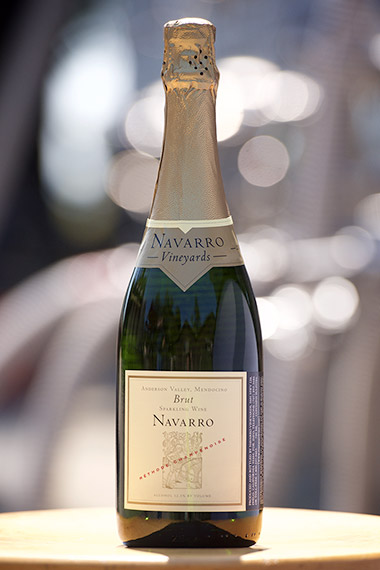An optimum ripeness for producing sparkling wine is when the grape acids are still high and the sugars are approximately 20° Brix, which yields about twelve percent alcohol. Whole-cluster pressing is slow, so harvesting for a particular wine is typically a multi-day exercise; winemakers try to start picking when the grapes are a hair "underripe" and finalize harvest with the grapes a hair "overripe." We harvested Navarro's Apple field over three days. The first day we harvested Gewürztraminer clone 48 from the rows closest to our neighbor's apple orchard (the same land that inspired us to name our field Apple). On day two we harvested clone 47 from the same field and returned a couple of days later to finalize the harvest. A cuvée was selected from these three lots and was bottled in June 2015, with just enough sugar added to produce the desired sparkle: a traditional process used with an untraditional spicy, aromatic variety.

![[left]](/images/buttons/arrow_left.gif) This bottling was disgorged in April 2017 after almost two years resting
This bottling was disgorged in April 2017 after almost two years resting sur latte
. Bottles, neck side down, are slowly shaken so the solids end up near the cork (riddling), the neck of the bottle is frozen, the crown cap is removed and a frozen plug containing wine and all the yeast pops out (disgorging). The bottle is then refilled with a liqueur made from the same wine, with additional sugar, then sealed with a permanent cork.

